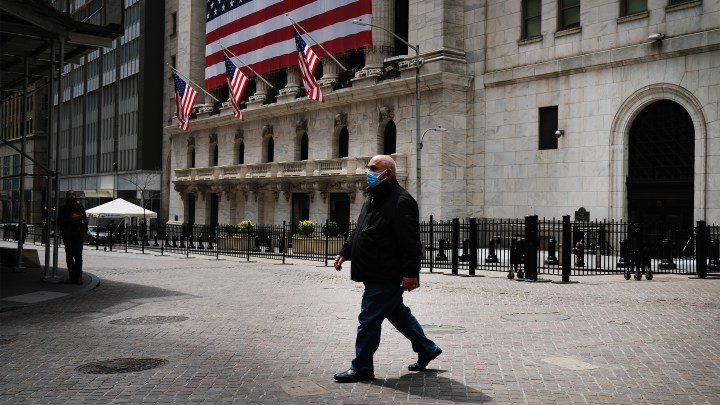
How economists are keeping up in the fast-paced COVID-19 recession
How economists are keeping up in the fast-paced COVID-19 recession

Once you get past the scale of the job losses — with the latest numbers on first-time claims for unemployment that came out Thursday putting the total at just under 27 million people who’ve lost their jobs — it’s the speed that’s amazing.
Twenty-seven million jobs vaporized in five weeks, which poses a challenge for those who observe and analyze this economy, accustomed as we are to quarterly and monthly data being good enough.
So economists are getting creative.
The Great Recession played out gradually over 18 months.
“What today is, instead of playing out over months and years, is playing out over days and weeks,” said Justin Wolfers, professor of public policy and economics at the University of Michigan. Our old friends gross domestic product and the unemployment rate are reported once a month, once a quarter.
“We need indicators telling us what’s happening today,” Wolfers said.
Andrew Chamberlain, chief economist at Glassdoor, said luckily, we live in an age of data.
“We have really different ways of measuring the economy today than we did a decade ago,” Chamberlain said. Tech platforms, social media and specialized firms have all kinds of useful real-time data. Take, for example, what job search platforms can tell us.
“You’ve got more than 20 million unemployed Americans [and] you might want to know if they are all expecting to go back to work,” Chamberlain said. “You might want to know if they’re out there searching for jobs or not.”
The Federal Reserve looks at data from credit card processors to know how people are spending, and payroll processing from ADP to track jobs. Both of those come out weekly.
“The [Transportation Security Administration] started making available to the public passenger traffic at airports on a daily basis, in real time,” said Ben Herzon, an economist with IHS Markit. “We could see that passenger traffic at U.S. airports had fallen like 95% by [the] end of March.”
Weekly chain store sales tell us about spending while electricity use can be a proxy for economic output. As for what exactly it’s all telling us?
“They still show the economy continuing decline, but there are a couple that are beginning to bottom out a little bit,” said Gary Schlossberg, global market strategist with the Wells Fargo Investment Institute. “There’s some more hope, [and] straws in the wind that the economy is still weakening but approaching a bottom.”
Whatever the indicator, once you hit bottom, there’s nowhere to go but up.
There’s a lot happening in the world. Through it all, Marketplace is here for you.
You rely on Marketplace to break down the world’s events and tell you how it affects you in a fact-based, approachable way. We rely on your financial support to keep making that possible.
Your donation today powers the independent journalism that you rely on. For just $5/month, you can help sustain Marketplace so we can keep reporting on the things that matter to you.

















